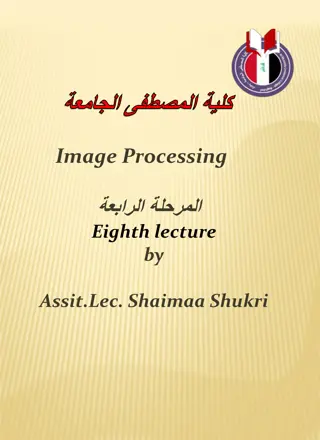
Coordinate Systems in Electromagnetic Field Theory
Explore the cylindrical and spherical coordinate systems in Electromagnetic Field Theory, including their relationships with rectangular coordinates. Learn how to convert between different coordinate systems for practical applications in electrical engineering.
Download Presentation

Please find below an Image/Link to download the presentation.
The content on the website is provided AS IS for your information and personal use only. It may not be sold, licensed, or shared on other websites without obtaining consent from the author. If you encounter any issues during the download, it is possible that the publisher has removed the file from their server.
You are allowed to download the files provided on this website for personal or commercial use, subject to the condition that they are used lawfully. All files are the property of their respective owners.
The content on the website is provided AS IS for your information and personal use only. It may not be sold, licensed, or shared on other websites without obtaining consent from the author.
E N D
Presentation Transcript
BINESWAR BRAHMA ENGINEERING COLLEGE subject: Electromagnetic field theory Department Of Electrical Engineering 6thSemester
The Cylindrical Coordinate System In the cylindrical coordinate system, a point in space is represented by the ordered triple (r, ,z) , where (r, ) are the polar coordinates of the point s projection in the xy -plane z is the usual z -coordinate in the Cartesian coordinate system In the xy-plane, the right triangle provides the key to transformation between cylindrical and Cartesian, or rectangular, coordinates.
The rectangular coordinates (x,y,z) and the cylindrical coordinates (r,,z) of a point are related as follows: These equations are used to convert from cylindrical coordinates to rectangular coordinates. x=rcos y=rsin z=z are used to convert from cylindrical coordinates to rectangular coordinates. These equations aThese equations are used to convert from rectangular coordinates to cylindrical coordinates r2=x2+y2 tan =y/x z=z used to convert from rectangular coordinates to cylindrical coordinates
Spherical coordinate system In the spherical coordinate system, a point P in space is represented by the ordered triple ( , , ) where (the Greek letter rho) is the distance between P and the origin ( 0); is the same angle used to describe the location in cylindrical coordinates; (the Greek letter phi) is the angle formed by the positive z -axis and line segment OP , where O is the origin and 0 . By convention, the origin is represented as (0,0,0) in spherical coordinates.
Rectangular coordinates (x,y,z) , cylindrical coordinates (r,,z), and spherical coordinates (,,) of a point are related as follows: Convert from spherical coordinates to rectangular coordinates These equations are used to convert from spherical coordinates to rectangular coordinates. Convert from rectangular coordinates to spherical coordinates These equations are used to convert from rectangular coordinates to spherical coordinates.
Convert from spherical coordinates to cylindrical coordinates Convert from cylindrical coordinates to spherical coordinates
Divergence and stokes theorem Divergence Theorem
Stokes theorem Just as the spatial Divergence Theorem of this section is an extension of the planar Divergence Theorem, Stokes' Theorem is the spatial extension of Green's Theorem. Green's Theorem states that the circulation of a vector field around a closed curve in the plane is equal to the sum of the curl of the field over the region enclosed by the curve. Stokes' Theorem effectively makes the same statement: given a closed curve that lies on a surface S, the circulation of a vector field around that curve is the same as the sum of the curl of the field across the enclosed surface.



![Lec [2] Health promotion](/thumb/274962/lec-2-health-promotion-powerpoint-ppt-presentation.jpg)
